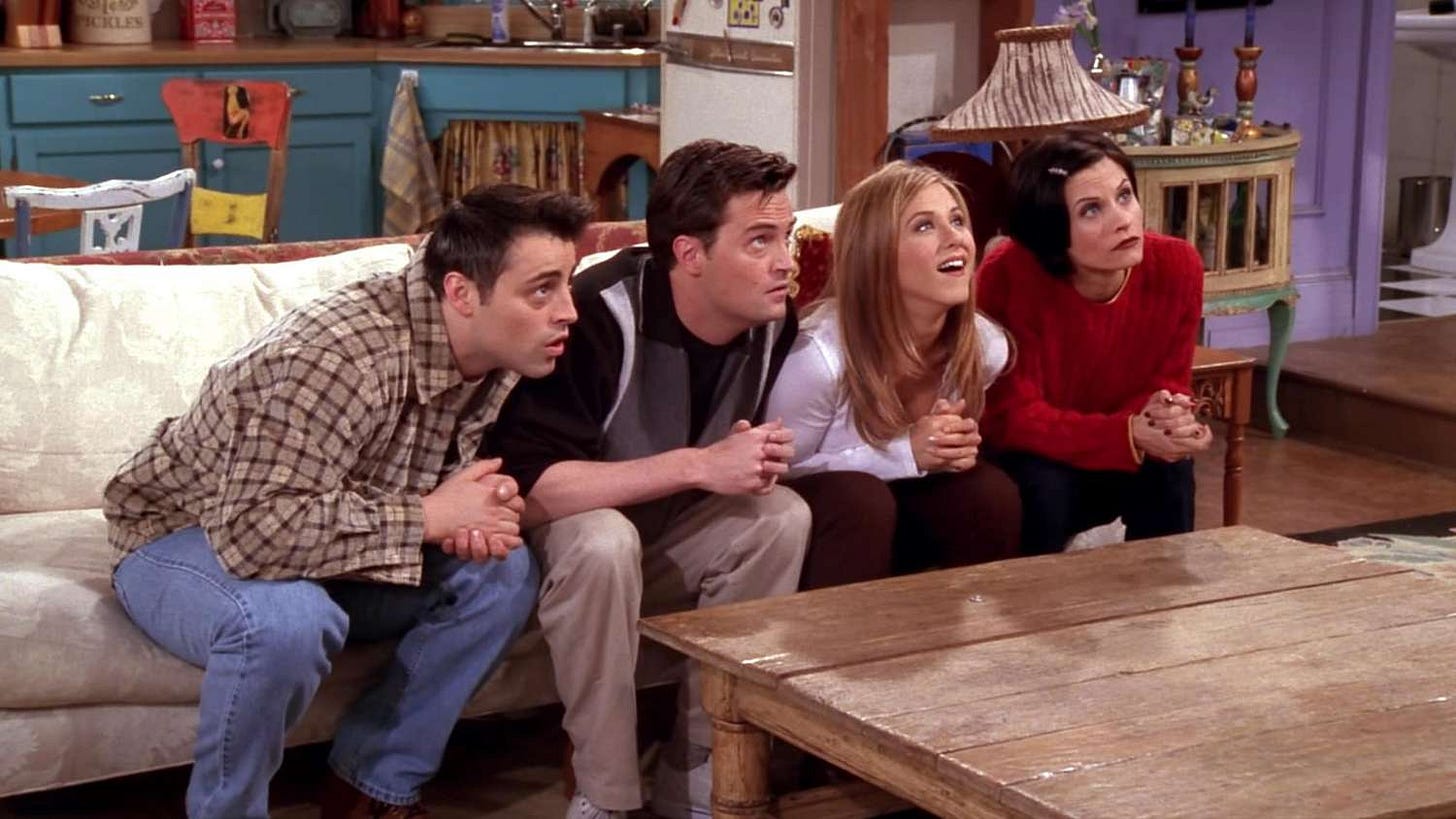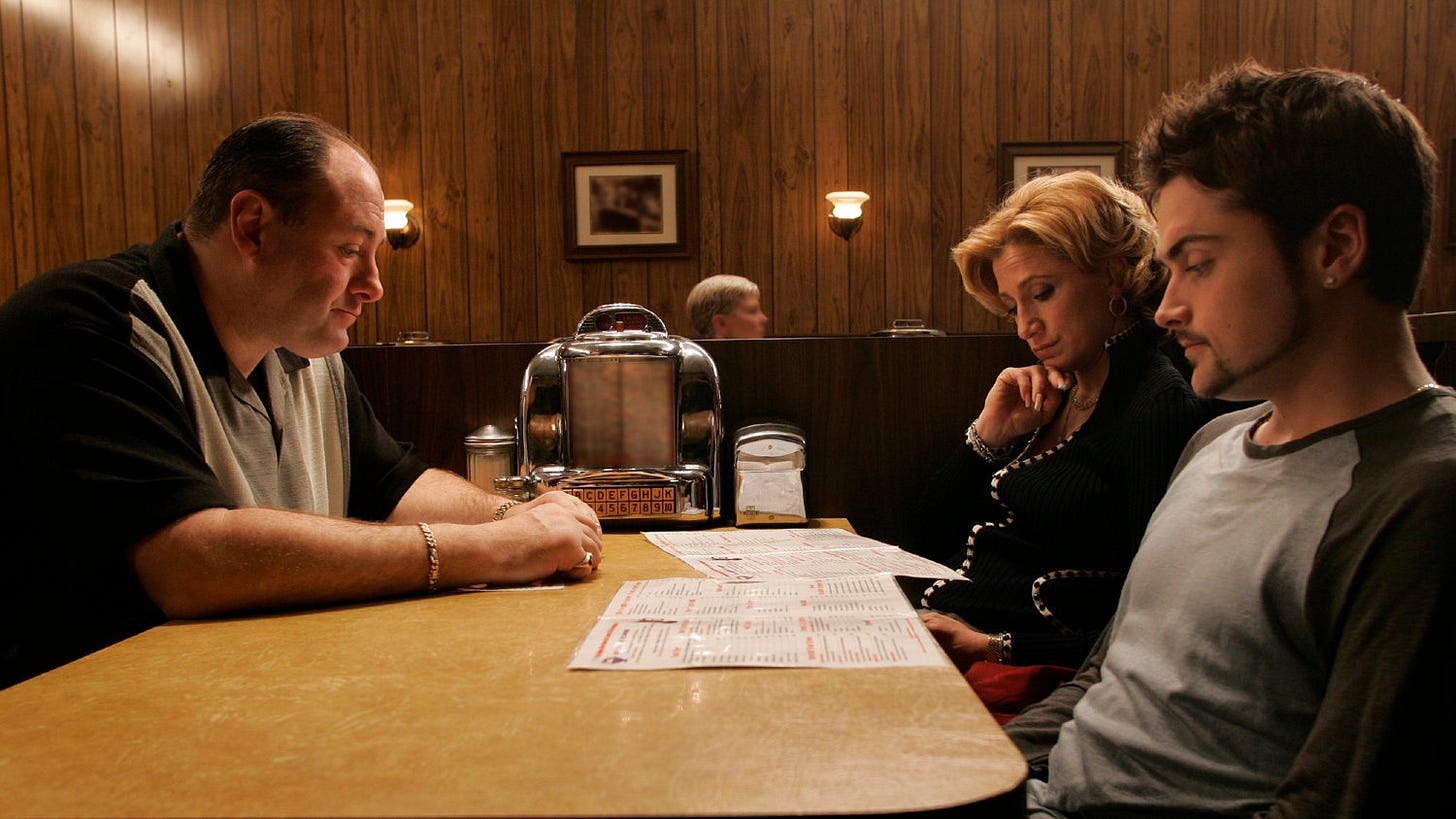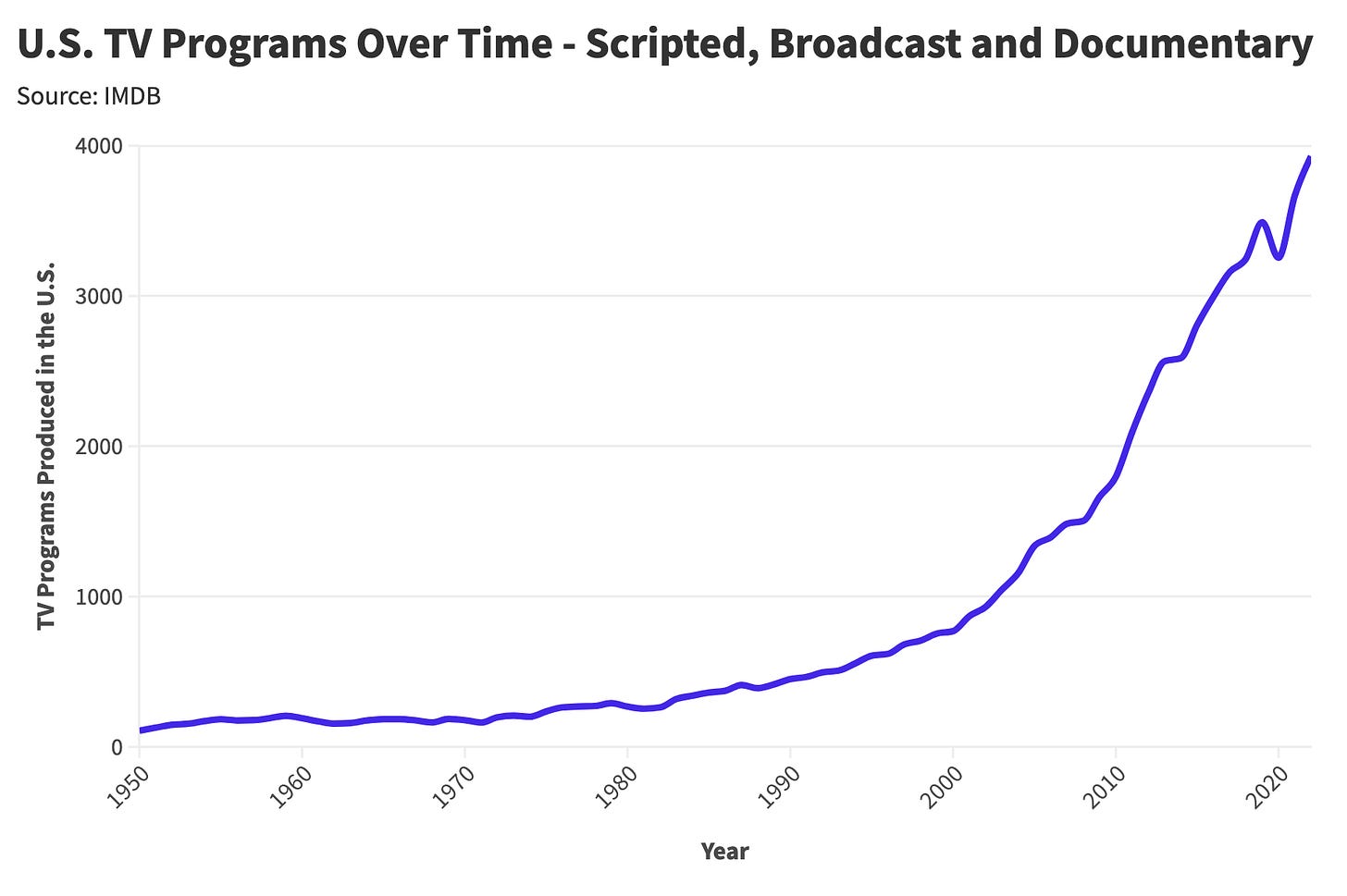The Rise and Fall of TV Sitcoms: A Statistical Analysis
The decline of the sitcom: from mainstream television staple to nostalgic relic.
Intro: I Love Lucy (A Lot)
The sitcom I Love Lucy was so popular in the 1950s that it measurably disrupted daily American life:
Marshall Field's, one of the country's largest department stores, changed its Monday evening hours in response to a noticeable drop in foot traffic during the show's airtime.
CBS, the sitcom's broadcast network, received several complaints from Parent-Teacher Associations requesting the show be moved from its 9 pm time slot so their children might go to bed earlier (while also being able to watch the series).
Telephone companies and municipal water departments reported a substantial decline in activity during the show's broadcast, and New Yorkers frequently complained of taxi shortages during this 30-minute period.
In 1953, an episode of I Love Lucy that featured the birth of Lucy's son was watched simultaneously by approximately 71% of American households—surpassing the viewership of Eisenhower's presidential inauguration.
Flash forward to today, when no narrative TV show captures more than 5% of American households at a time, and the sitcom format is in decline (and has been for decades). Traffic patterns and water pressure remain unaffected by television viewership, and laugh tracks are an anachronistic novelty. The sitcom, once a unifying pillar of American life and a wildly popular global export, is on the brink of extinction—with the format's boom and bust mirroring the entertainment industry's shift from mass monoculture to fragmented streaming silos.
So today, we'll explore the rise and fall of the TV sitcom, investigate the genres that have taken its place, and consider whether this beloved format is ripe for a revival.
The Rise and Fall of the Sitcom
Before charting the sitcom's history, we must first define what a sitcom is—a concept that is surprisingly elusive. Several storytelling characteristics distinguish sitcoms from other television formats:
Recurring Setting: A sitcom typically revolves around a handful of consistent settings, like a home, workplace, or bar, that are featured in most episodes. In Friends, 90% of scenes take place in a coffee shop or one of three apartments.
Episodic Structure: Most installments resolve their central conflict by the episode's end, returning to a largely unchanged status quo. Certain storylines can be developed across multiple episodes and seasons—like Jim and Pam's romance in The Office—but most plots are confined to a single installment.
Lighthearted Tone: Sitcoms maintain a consistently cheerful, optimistic tone, even when addressing serious subject matter. Seinfeld and It's Always Sunny in Philadelphia are playful shows about terrible people who seemingly curse the lives of everyone they meet.
Theatrical Staging and Laugh Tracks: Sitcoms often adopt a theatrical format, utilizing fixed camera setups and an audience-oriented performance style that resembles a stage play—a narrative choice often underscored by the use of laugh tracks. Not all sitcoms employ these characteristics (e.g., The Office, It's Always Sunny in Philadelphia), though any show featuring a laugh track automatically qualifies as a sitcom.
To quantify the prevalence of the sitcom format over time, we'll rely on Wikipedia genre tags. Wikipedia typically assigns multiple genre categories to a single show; any series tagged "sitcom" will be classified as such.
According to our genre dataset, sitcoms have historically accounted for approximately 10% of new shows, peaking in popularity during the 1990s—a decade marked by monocultural hits like Seinfeld, Friends, and Frasier—before experiencing a sharp decline starting in the 2000s.
This data understates the cultural ubiquity of sitcoms throughout the 20th century. Of the ten most-watched television finales in American history, eight of these episodes belong to prominent sitcoms, with tens of millions of Americans bidding farewell to shows like M*A*S*H and Cheers.
So what caused this once-beloved television format to fall out of favor? The short answer is "Peak TV" and streaming.
In 1999, The Sopranos premiered on HBO, marking a pivotal moment in television history due to the series' notably intricate narrative structure and nuanced character development. The show blurred the line between film and television, incorporating cinematic techniques and storytelling devices that elevated TV to a more "serious" artform. Other series quickly followed suit, with shows like The Wire, Breaking Bad, and Mad Men adopting the production value and narrative complexity traditionally associated with arthouse cinema. Netflix accelerated this ongoing evolution, introducing its streaming service and launching ambitious shows like House of Cards and Orange Is the New Black.
The 2000s and 2010s saw unprecedented investment in television production, leading to an increase in programming choices and higher-quality shows.
In 2015, FX CEO John Landgraf coined the term "Peak TV" to describe the rising number of scripted television series and the emergence of big-budget prestige dramas. When we measure TV production using IMDb data, we observe an explosion of content beginning in the early 2000s.
The sitcom's preeminence waned amid this deluge of television programming, though its decline stemmed from more than a crowded marketplace.
At the turn of the century, traditional formats such as sitcoms and soap operas gradually gave way to buzzier concepts like high-profile dramas and limited series thrillers.
The sitcom, one of television's most mainstream formats, became associated with cable-bound traditionalists, while edgy streaming platforms lured consumers with flashy prestige shows starring A-list film actors. Big-budget productions like Severance, Stranger Things, and Masters of the Air served as a rebuke to conventional television programming, enticing audiences to pay a whopping $9.99 per month—at least temporarily.
Streaming platforms eventually settled on a handful of dependable formats—self-important dramas, glossy reality TV, and true-crime docuseries—but deliberately steered clear of sitcoms, effectively branding the genre as outdated. Occasionally, streamers experiment with the sitcom format—such as Netflix's The Ranch or Tires—but situational comedy has mostly retreated to shrinking cable networks. And yet, despite the scarcity of newly produced sitcoms, the genre endures as a nostalgic artifact.
Enjoying the article thus far and want more data-centric pop culture content?
The Retro Revival of Sitcoms
If the sitcom is dead, then it's having a rather active afterlife.
In 2020, The Office, a show that ended nearly a decade prior, topped Nielsen's year-end viewership rankings by a significant margin.
In 2024, HBO Max released data indicating that The Big Bang Theory (a show that concluded five years prior) was its most-binged series, totaling around 29.1 billion minutes of annual streaming time.
Services like HBO Max, Hulu, and Peacock add hundreds of shows and movies to their platforms every year, yet somehow classic sitcoms still account for 12 to 15% of all streaming demand on these services, driven by a handful of iconic shows, including Friends, Seinfeld, Frasier, and The Office.
According to a 2023 YouGov poll, half of Americans rewatch a previously seen TV episode at least once a week. Among these viewers, nearly 60% identified comedy as the genre they most frequently watch and rewatch.
When asked to provide a rationale for consuming familiar material, survey respondents cited humor, relatability, and nostalgia as the primary reasons for revisiting content.
Taken together, this constellation of data points could be interpreted in one of two ways:
The Sitcom Is Dead but Will Live on as Nostalgic Comfort Food: Generations of viewers will keep revisiting shows like How I Met Your Mother, Friends, and The Office for a serving of low-stakes nostalgia, savoring the ease and familiarity of these beloved classics. Though new sitcoms may be scarce, the genre will endure through classic series that audiences binge-watch repeatedly on streaming platforms.
The Sitcom Is Primed for a Comeback: After presiding over the sitcom's demise, Netflix will once again position itself as a streaming innovator by launching several buzzy multi-camera workplace comedies that feature a laugh track and are filmed in front of a live studio audience. The New Yorker and Vox will call this programming "brave" and "audacious," prompting Hulu and HBO Max to follow suit. Everyone will finally admit that they secretly love sitcoms and find laugh tracks comforting, and the format will reclaim its place as a unifying force in American life 🇺🇸.
Final Thoughts: The Wonders of Cable TV (On Vacation)
I no longer watch cable TV—except when I'm on vacation. Whenever my wife and I stay at a hotel, we exclusively consume Diners, Drive-ins and Dives and "Nick at Nite" (which primarily airs episodes of Friends and The Big Bang Theory). I enjoy these shows so much that I genuinely look forward to this ritual as a highlight of our trip.
Now, perhaps you consider yourself a cultured individual because you pay for The New York Times (but mostly use it for Wordle) and you once saw a heady play on Broadway (that you found confusing but are ashamed to admit so), and you're sitting there thinking to yourself "only a fool would watch prosaic trash like The Big Bang Theory!! 🧐"
Well, I used to be just like you—going around dismissing mainstream culture and playing Wordle. But on my most recent vacation, as I sat there giggling at another perfectly timed "Bazinga!" from The Big Bang Theory's Sheldon, I stumbled upon a fun little thought experiment: What if Netflix's first foray into original content had been a multi-camera sitcom as opposed to House of Cards?
Sitcoms fell out of fashion because they no longer confer meaningful social prestige or signal cultural capital—in fact, they pretty much do the opposite—but what if Netflix or HBO embraced the format? If Cate Blanchett and Robert De Niro were cast in a lavish, big-budget sitcom penned by Oscar-winning comedians, would the format still seem outdated? Would self-styled elites consider sitcoms passé if the genre were embraced by taste-making streamers? Or was the sitcom inevitably doomed in a fragmented streaming landscape precisely because it was once so thoroughly mainstream? Can sitcoms only flourish in a television industry defined by five primetime channels?
Suppose the genre is incompatible with today's world of infinite content silos. In that case, the sitcom can only persist as nostalgic comfort food—a reminder of simpler times when relatable characters were met with laugh-track applause, department stores adjusted their hours around TV schedules, and 71% of households would tune in to watch the birth of a fictional baby.
Struggling With a Data Problem? Stat Significant Can Help!
Having trouble extracting insights from your data? Need assistance on a data or research project? Well, you’re in luck because Stat Significant offers data consulting services and can help with:
Insights: Unlock actionable insights from your data with customized analyses that drive strategic growth and help you make informed decisions.
Dashboard-Building: Transform your data into clear, compelling dashboards that deliver real-time insights.
Data Architecture: Make your existing data usable through extraction, cleaning, transformation, and the creation of data pipelines.
Want to chat? Drop me an email at daniel@statsignificant.com, connect with me on LinkedIn, reply to this email, or book a free data consultation at the link below.
Want to chat about data and statistics? Have an interesting data project? Looking to produce data-centric editorial content? Email daniel@statsignificant.com














It's weird, but I don't remember the series finale of The Simpsons. Hold on...
[someone whispers in my ear]
Wait, what?!
I wonder how much influence TiVo and other DVRs had over the transition from sitcoms to dramas. A key feature of the classic sitcom is they can be watched in any order, every episode returning a status quo. Once we had DVRs, shows were no longer bound by this, they could expect that we would watch every episode, in order. That really opened up new possibilities in TV with The Wire, Breaking Bad, etc.